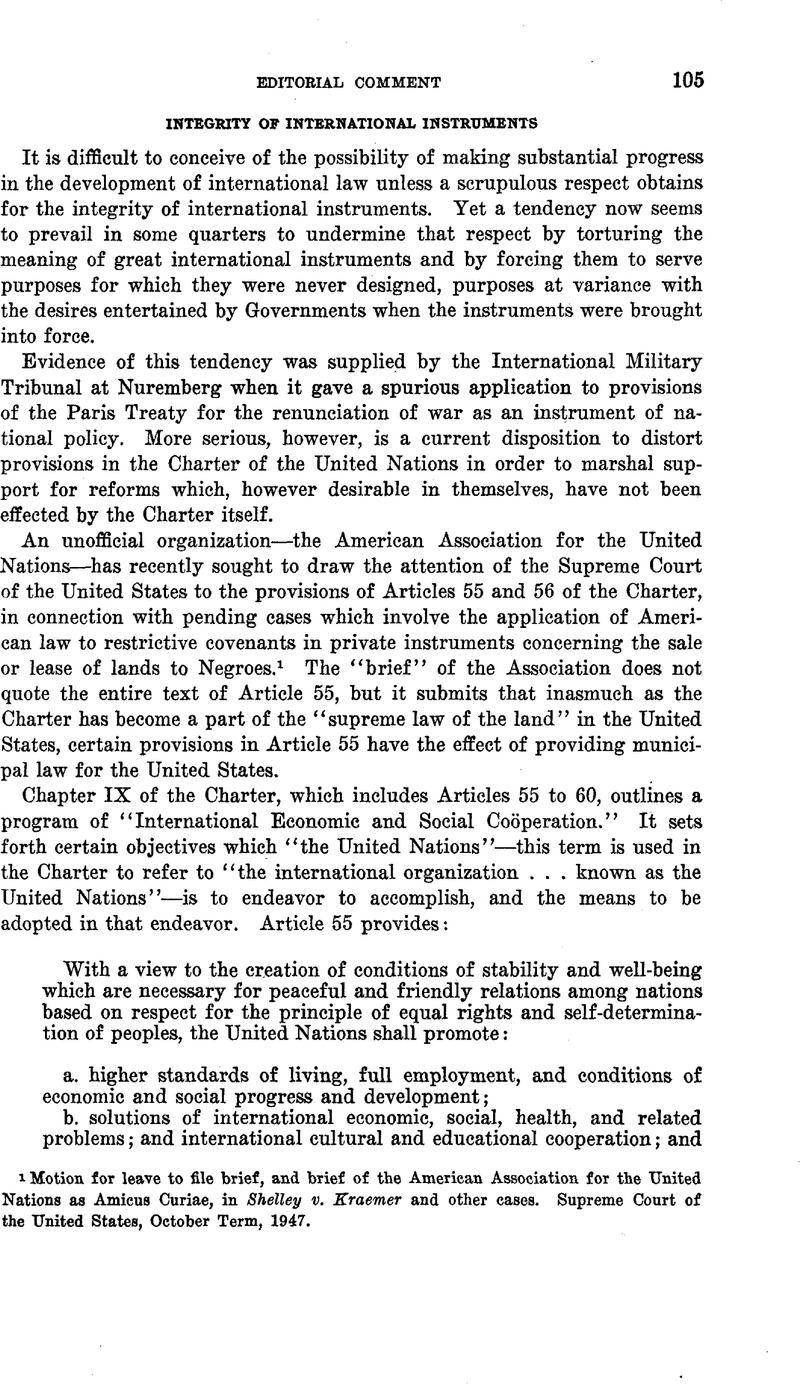Published online by Cambridge University Press: 20 April 2017

1 Motion for leave to file brief, and brief of the Ameriean Association for the United Nations as Amicus Curiae, in Shelley v. Kraemer and other cases. Supreme Court of the United States, October Term, 1947.
2 This view of Article 56 is strengthened upon a reading of the French version: “Les Membres s’engagent, en vue d’atteindre les buts enoncés à l’article 55, a agir, tant conjointement que séparéfiment, en coopération avee 1’Organisation.”
It is true that some delegates at the Conference in San Francisco expressed a desire to go further in the direction of a commitment to separate action. This was opposed by the U. S. delegation, and the records of the Conference support the conclusion that the opposition prevailed. See 10 Documents of the United Nations Conference on International Organisation, pp. 39, 40, 52, 57–58, 74–75, 83, 99–100, 127–128, 130, 139–141, 161. The history is summarized in the report made to the President by the Secretary of State on June 26, 1945, p. 115, as follows: . . . “the United States Delegation deemed it perfectly appropriate for the member states to pledge themselves to cooperate with the organization for the achievement of these purposes. On the other hand, the view was advanced that the further element in the Australian proposal calling for national action separate from the international organization went beyond the proper scope of the charter of an international organization and possibly even infringed on the domestic jurisdiction of member states in committing them to a particular philosophy of the relationship between the government and the individual. The pledge as finally adopted was worded to eliminate such possible interpretation. It pledges the various countries to cooperate with the organization by joint and separate action in the achievement of the economic and social objectives of the organization without infringing upon their right to order their national affairs according to their own best ability, in their own way, and in accordance with their own political and economic institutions and processes.”
3 Some of the Members of the United Nations, it should be remembered, have no analogous doctrine of incorporation and reception of treaty provisions into the national law.